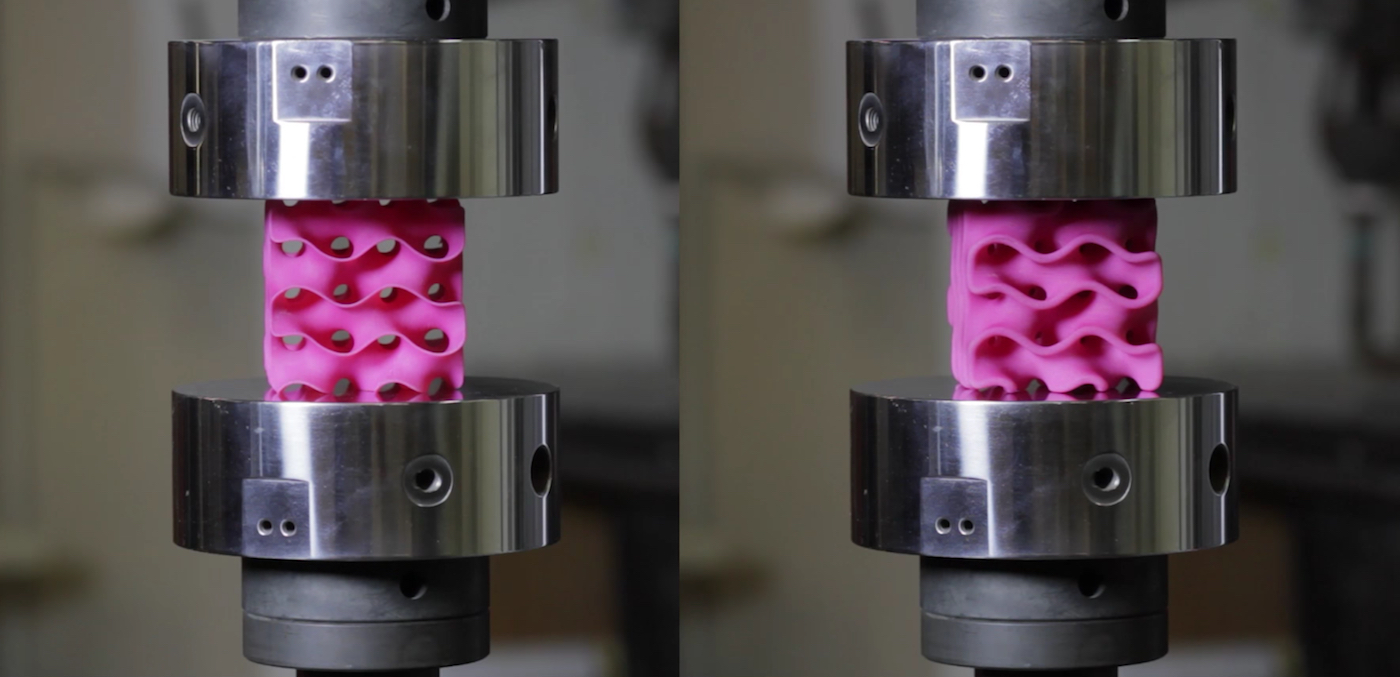
An awful lot of ink has been spilled about how graphene is going to basically save the world with its myriad applications and powers. But chances to actually see evidence of how and why the hexagonal lattices are so strong in a life-size way have been few and far between. The Massachusetts Institute of Technology has changed that. The school's latest experiment uses graphene material that's 5 percent as dense as steel and ten times the metal's strength, showing what's possible when the composite is more than just a flat sheet.
Starting from a highly-accurate computer model, the researchers 3D printed diatomic cubes to represent the material's sponge-like structure and then subjected them to compression tests. The shape here is incredibly important; the cube itself looks like a magenta sponge. Its porous nature means that there's more surface area, and more surface area means higher strengths at lower weights.
Perhaps most interesting is that the different cubes reacted unexpectedly. One with thicker walls and folds, for example, was actually less stable as more pressure was applied. Compared to one with thinner construction, it shattered explosively. By comparison, the thinner cube broke down in an almost controlled way, retaining its shape almost to the end.
MIT says that this is because the thinner walls allow the structure to deform gradually while the thicker one stores the deformation energy, which releases all at once. This lead to the discovery that it it's not so much the materials in use (although it certainly helps), but their shape that contributes to strength, too.
"You can replace the material itself with anything," MIT's head of Civil and Environmental Engineering said. "The geometry is the dominant factor."
One potential use? Taking polymer or metal particles, coating them with graphene and then removing the base materials after heat and pressure treatment. Such a method would leave the graphene's lightweight and super strong structure in place. MIT thinks this type of application could be used anywhere from concrete bridges and even filtration systems for water or chemical processing.